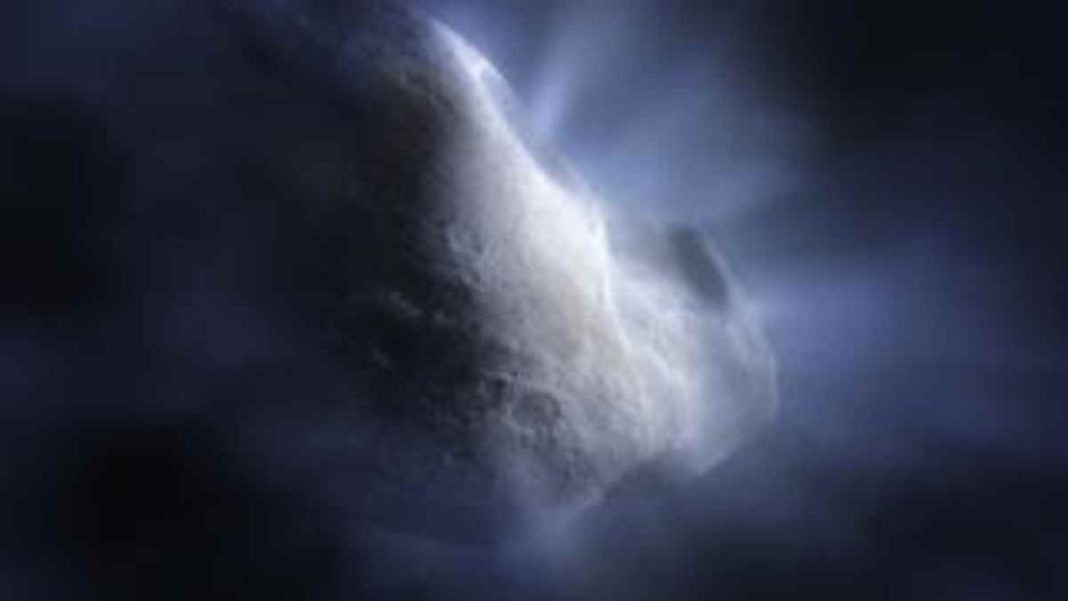UNITED STATES: NASA’s James Webb Space Telescope has made a significant breakthrough in studying Earth’s water origins, as it detected water vapour around a comet in the main asteroid belt for the first time.
The findings, made possible by Webb’s NIRSpec instrument, suggest that water ice from the early solar system can be preserved in this region.
However, this discovery also poses a new puzzle: the comet, named 238P/Read, lacks detectable carbon dioxide, unlike other comets.
The presence of abundant water on Earth remains a captivating mystery for scientists, and understanding the distribution of water in the solar system could shed light on other planetary systems and the potential for hosting Earth-like planets.
Stefanie Milam, Webb’s deputy project scientist for planetary science and co-author of the study, expressed the significance of unravelling the history of water distribution.
She emphasized that comprehending this process not only helps solve the enigma of our water-soaked world but also aids in understanding the potential for water in other planetary systems.
Comet 238P/Read, known as a main-belt comet, is an intriguing celestial object that resides in the main asteroid belt but exhibits comet-like features such as a halo, or coma, and a tail.
This classification of main belt comets is relatively new, as comets were traditionally believed to exist in the Kuiper Belt and Oort Cloud beyond Neptune’s orbit, where their icy compositions could be preserved far from the Sun.
The distinct coma and streaming tail of comets arise from the vaporization of frozen materials as they approach the Sun, distinguishing them from asteroids.
While scientists had speculated that water ice might be preserved in the warmer asteroid belt, which lies inside Jupiter’s orbit, conclusive evidence had been elusive—until now, with the assistance of Webb.
Astronomer Michael Kelley from the University of Maryland, the study’s lead author, explained the significance of Webb’s precise spectral data in confirming the presence of water ice.
Previous observations had identified objects in the main belt with comet-like characteristics, but it was only through Webb’s observations of Comet 238P/Read that astronomers can definitively attribute the effect to water ice.
Surprisingly, the absence of detectable carbon dioxide in Comet 238P/Read raises further intrigue. Carbon dioxide constitutes about 10 percent of the volatile material that can quickly vaporize due to the Sun’s heat in comets. The research team presents two possible explanations for this anomaly.
One possibility is that the comet initially possessed carbon dioxide but subsequently lost it over billions of years due to warm temperatures in the asteroid belt.
Alternatively, Comet 238P/Read might have formed in a region of the solar system where carbon dioxide was unavailable, resulting in its absence.
Astronomers are eager to extend their research beyond Comet 238P/Read and investigate how other main belt comets compare. Heidi Hammel, an astronomer from the Association of Universities for Research in Astronomy (AURA) and lead for Webb’s Guaranteed Time Observations for solar system objects, expressed excitement about the prospects of studying these small and faint objects with Webb’s capabilities.
Understanding whether other main belt comets also lack carbon dioxide or possess different characteristics will provide valuable insights.
Stefanie Milam, one of the study’s co-authors, envisions the possibility of pursuing further research. With the confirmation of water’s presence as close as the asteroid belt, she suggests that a sample collection mission could be conducted to uncover additional insights from main belt comets. Such a mission could yield fascinating discoveries and expand our understanding of these intriguing celestial bodies.
The study detailing these groundbreaking findings has been published in the journal Nature, signifying a major advancement in our knowledge of the solar system’s water distribution and the mysteries that continue to captivate scientists.
Also Read: NASA Warns of Three Approaching Asteroids: 2023 JL1, 2023 JO1, and 2023 JD2



